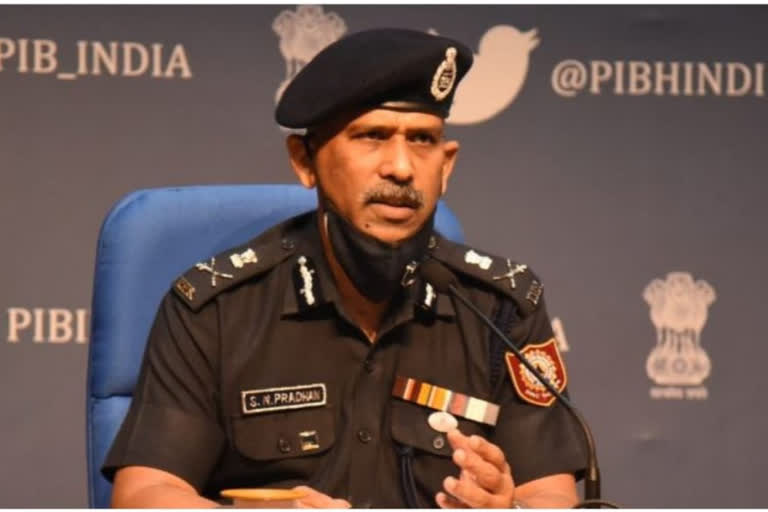New Delhi: Experiences from the cyclonic storm Fani seems to have helped the National Disaster Response Force (NDRF) in fighting super cyclone Amphan with a more clear-cut strategy.
"Based on experiences during Cyclone Fani, all the NDRF teams are equipped with tree cutters, pole cutters for post-landfall restoration, if the need arise," said SN Pradhan, director-general of NDRF.
It may be mentioned here that Fani before its landfall on May 4, 2019, killed more than 85 people mostly from Odisha, coastal areas of West Bengal, and Bangladesh. It also damaged properties worth crores of rupees.
It was during the post-Fani disaster, the NDRF strategised itself with the latest gadgets to fight similar kinds of natural disasters.
The NDRF has deployed 20 teams in Odisha and 19 teams in West Bengal, two of the projected states which are likely to be severely affected by super cyclone Amphan. This Cyclone is said to have its origin in the Bay of Bengal.
"A close watch is kept over the cyclone. Our officials are in coordination with the respective state authorities," said Pradhan.
Pradhan said that all the teams have been equipped with wireless and Satellite communications. Interestingly, all the NDRF persons on field are also equipped with Personnel Protective Equipment (PPEs). "We are fighting with two major challenges, one pandemic, and another cyclone. Our jawans are equipped with PPEs and they are also maintaining social distancing," he added.
He said that a massive awareness programme was being conducted for both Covid-19 and Amphan cyclone. As per government statistics, more than 5 lakh people have been evacuated from West Bengal and 158640 people have been evacuated from Odisha.
The Indian Meteorological Department (IMD) termed Amphan as the second super cyclone after October 1999 over the Bay of Bengal.
"It's track similar to Bulbul, but more intense than Bulbul," said Mrutyunjay Mahapatra, director general of IMD.
He said that Amphan will cross West Bengal and adjoining Bangladesh coast between Digha and Hatia close to Sundarbans during the later afternoon to the evening of May 20 with a maximum sustained wind speed of 155-165 kmph gusting to 185 kmph. The sub-Himalayan states of Assam, Meghalaya, and Sikkim will also face the impact.
"Light to moderate rainfall at many places with heavy falls at isolated places on Wednesday and at most places with heavy to very heavy rainfall at a few places over the western districts of Assam and Meghalaya on Thursday," said Mahapatra.
ALSO READ: Strong winds, heavy downpour accompany cyclone Amphan as it heads towards West Bengal



